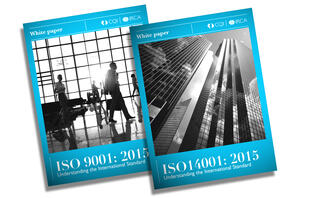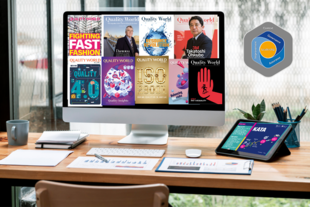
Behind the scenes: revising ISO 9004
Mark Braham, FCQI CQP, reports from Rotterdam where he was the CQI category A liaison for ISO/TC 176, the committee revising the quality management standard.
In November the 32nd plenary meeting of ISO/TC 176 on quality management and quality assurance took place in Rotterdam, Netherlands.
ISO 9004:2009 ‘Managing for the sustained success of an organisation - A quality management approach’ gives guidance for supporting the sustained success of organisations who work in a complex, demanding, and ever-changing environment and use a quality management approach.
The standard explains that sustained success will be achieved when businesses meet the needs and expectations of customers and other interested parties. This will only be effective if you plan for the long term and create a learning environment, led by management so enhanced improvements or innovations must be made throughout the entire organisation.
One advantage of this standard, compared to many others, is that it includes a self-assessment tool for reviewing the maturity level of the organisation covering its leadership, strategy, management system, resources, and processes. This tool identifies areas of strength and weakness as well as opportunities for either improvements or innovations.
ISO 9004 provides a broader focus on quality management than ISO 9001. It aims to meet the needs and expectations of all relevant interested parties and provides guidance for the methodical and constant improvement of the organisation's overall performance.
In total there was 817 comments:
- 39 general
- 2 on title
- 163 on clauses 0-4
- 82 on clauses 5,6
- 100 on clause 7
- 79 on clause 8
- 123 on clause 9
- 88 on clause 10
- 58 on clause 11
- 78 on Annex A
- 3 on Bibliography.
At the meeting
On the first day we stayed together as a working group and we went through the general, title and clauses 0-4, before breaking into smaller task groups to complete clauses 5-11 and annex A.
For those who do not know the process, we start by reading through the comments and the recommended action. Believe it or not ISO do not have a standard response for each comment. The secretary of each technical committee decides the format we should use, so once all comments have been dispositioned we have an auditable record.
We then decide the outcome as a task group, using experience and knowledge from individual experts from industry in different countries and consultants who use the standard. There are a number of outcomes for each comment, it might be accepted in full or partially, it could also be noted or rejected.
Despite the many comments I hear on various forums, the process is fair and we reach consensus on every comment. Sometimes everyone agrees and in other situations we can debate for some time until the majority in the room agrees with the text in the standard. It is the responsibility of the convener to ensure all group members have an opportunity to speak and debate their views.
I have the utmost respect for many members because everything is discussed in English so those from other countries have to translate and then respond quickly.
I often find with so many different people from differing backgrounds all read the same text and apply it differently, however this helps us to agree on a way forward. As we have people in the room from different cultures and languages, we can quickly check if the text makes sense when translated.
We are aiming to publish a draft in early 2017, the decision to go directly to Final Draft International Standard has not been made but is permitted by ISO. However, I will keep all CQI and IRCA members informed of changes as soon as they occur.
Want more content like this?
Catch up with the breaking news on quality standards by visiting the Knowledge hub.
Get the latest ISO reports and resources

Our many reports and resources will help you achieve a smooth transition to ISO 9001:2015 and ISO 14001:2015.



